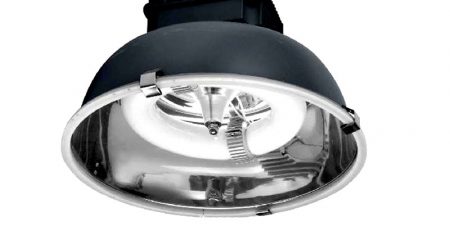VACUUM METALIZED SURFACES
The process
In vacuum metalizing, mostly pure metals are first heated to transform from solid to vapor state in a vacuum and then allowed to condense on the substrate surface. This process is shown in Figure M5.6.1. The material to be deposited is called as source and is heated in either electrical resistance or induction or electron beam. The common one is resistance method. This process is carried out in a closed chamber maintaining a vacuum of 10-3 to 10-5 mbar
Typical characteristics and applications
Important applications of vacuum coatings are listed below: 1. Decoration: A bright, lustrous metallic coating is applied to plastic components, film, or paper. 2. Optical applications: A thin film is applied to optical glass to provide reflectance e.g. sun glasses. 3. Corrosion protection: Less frequently used for this type of application 4. Electronics and electrical applications: Capacitors, integrated circuits, contacts, and photo conductors utilize vacuum coatings. 5. Encapsulation of powdered materials
If the substrate surface is smooth, the resulting vacuum coating finish will be brilliant and does not require buffing. Commonly used products in which decorative vacuum coatings are employed, are costume jewelry, toys, home appliances, hardware, automotive trim (normally interior), decorative nameplates, and various sheet materials. Among various optical applications, mirrors, automobile head lights, flash lights and other reflectors, telescopes, microscope filters, sun-glasses, optical filters and other instruments, beam splitters, and other objects requiring some degree of light reflection are common. Most usable application of vacuum coating is in food containers, for which tin can be applied by vacuum methods more economically than by electroplating
Table M5.6.1: Typical Applications of Vacuum-Deposited Coatings. (Source: Design for Manufacturability Handbook by James G Bralla, 2nd Ed)a
Vacuum-deposited coatings are generally of high purity and density. The maximum size of component that can be vacuum-coated depends on the size of vacuum chamber available. Tables M5.6.1 summarize different applications of vacuum coatings.
Suitable materials
Aluminum is considered to be the most common vacuum-coated material. It is found in over 90% of decorative coatings and also used for optical, electronic, or corrosion-protection purposes also. In accordance with the decreasing vapor pressure (the most important factor in vacuum coatability), after aluminum, selenium, cadmium, silver, copper and silicon monoxide fall in the series. Further, another group, in order of decreasing vapor pressure, is gold, chromium, palladium, nickel-chromium alloy, magnesium fluoride and titanium. In fact, certain compounds of metals and other elements are also useful for coatings and can be deposited by this method. Silicon monoxide is one of such compounds. It provides an abrasive-resistant finish over aluminum and is often applied immediately after the deposit of aluminum without interrupting the vacuum. Magnesium fluoride and aluminum oxide are used in the manufacture of electronic capacitors.
Design recommendations
Recommendations are provided for vacuum-coated components based on two different aspects.
The need for an enclosed vacuum chamber with its inherent size limitations
The line-of-sight travel path of coating vapor from source to work piece
Based on these factors, the design recommendations are given below.
Compact parts are preferred to enable a large number to be placed in the vacuum chamber. Arms and other extensions that may interfere with the placement of other work pieces or with the holding fixtures should be avoided. If possible, it is recommended to separate large component (to be vacuum coated) into different parts and perform assembly operation after coating.
Deep recesses on the surface to be coated should be avoided. (Refer Figure M5.6.1.)
When a decorative coating is applied to the second surface of a component, ribs, bosses, or other appendages that affect the thickness of the part as measured from the first surface will affect its appearance. When the second surface is to be coated, the thickness of the part between surfaces should be uniform. (Refer Figure M5.6.2.)
Coating the interior surfaces of hollow parts is difficult unless the interior of the work piece is large enough to contain the filament or other source of evaporated metal. It is recommended to avoid interior surface coating if possible, as it is expensive.
Regular surface are preferred for vacuum coating. Irregular surfaces shown in Figure M5.6.3 (a) require multiple sources of metal evaporation to ensure coverage of all areas. More regular surfaces as illustrated in Figure M5.6.3 (b) are preferable and should be specified whenever possible.
One-side coatings should be specified whenever possible. The fixtures used to rotate the workpiece for more than one side coating is costly
The angle of the part’s surface and the line of sight path of the vapour should not be less than 450 . (Refer Figure M5.6.4)
Vacuum coating can be deposited directly on the substrate without the necessity for a pre-coat for optical parts and others with a smooth enough surface. The design should be such that pre-cleaning solvents can drain easily from the surface.
Highly irregular surfaces, large flat surface are not desirable for vacuum coating. It becomes difficult to spray a smooth coating over a large surface and maintain a uniform appearance.
Finishes
Even though the coating thickness can be controlled to close tolerance, there are normally variations in part-to-part coating thickness and in the thickness on one workpiece. The factors affecting this coating thickness are:
Inherent non-uniformity in the disperse pattern of vapor from the source
Irregularities in shape of the workpiece surface
Shadow effect which results when the supporting frame comes between the workpiece and the vapor source
Thickness can be controlled by controlling the process parameters such as:
Filament size and current
Coating-metal clip size
Degree of vacuum
Vaporization time
For normal applications, the following nominal dimensional ranges are recommended:
Decorative and simple reflective coatings, 0.05 to 0.13 µm
Corrosion-protection coatings, 5 to 10 µm


